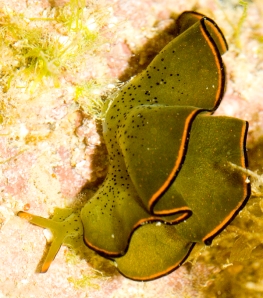The Olympics are upon us, and so are the many articles on the horribly unacceptable spectre of GENE DOPING!!!1!. Oh how contrary to the athletic goal it is to try make your own body better than the bodies of your competitors. How dare they try to run faster or longer, jump higher or farther or concentrate better!
I give a list of the recent articles on the subject, plus a bit of my own commentary on the viewpoints expressed by the authors.
The ‘exercise pill’
Ron Evans and his team developed a pill that can mimic the effect of exercise, or increase exercise’s impact, on muscle endurance. I’ll talk about the science behind this another time, but suffice it to say it isn’t really exercise in a pill – just an endurance enhancer in a pill. It is important to note that Evans developed blood and urine tests for the constituents of the pill and gave it to the World Anti-Doping Agency (WADA). Fair enough – such a pill would be against the rules – but I think this is a dangerous precedent. Could scientists be expected, some time in the future when academic or health enhancements are against the law, to make all enhancements easily detectable? It’s a recipe for “gene-ism’ in my opinion.
Enhancements are just natural
Andy Miah, whose blog has long been on my blogroll, has an article in the Washington Post that is actually pro gene-doping. Unfortunately, I think his reasoning leaves a bit to be desired. First, the title of the piece – “Enhanced Athletes? It’s Only Natural” – seems to close to the fallacy of ‘appeal to nature’ (if it is natural, it is acceptable). Though seeing as this fallacy is often used in arguments over this subject, perhaps it is appropriate to fight fire with fire.
Also, consider this paragraph:
By today’s standards, if most of us non-athletes took a random doping test, we’d probably fail it. Few consider this to be morally troublesome. For most of us, human enhancement is an essential part of daily life: We enjoy ultra-whitening toothpaste, vitamins, anti-aging skin cream, daily doses of caffeine and much more. We’re already enhancement junkies. So why should athletes be restricted in carrying out their daily tasks — such as breaking world records — when the rest of us are unimped in gaining a competitive edge at the office by, say, drinking coffee?
This is merely pointing out contradictions in the way we act, which does nothing to get to the underlying issue of whether enhancements are acceptable. It could very well be that caffeine in the office will soon be banned. Nonetheless, I applaud Andy Miah for putting himself out there on the pro-doping side of the argument. It should create some discussion, at least.
Amateurs cheat like the pros
Another article in the Washington Post tells how amateurs are using performance-enhancers. But amateur sportspeople seem to be amateur enhancers too, using enhancements like “painkillers, caffeine (in pill and standard liquid form), decongestants and asthma drugs”.
But most amazing, I think, is this quote about a comment made by internist Gary Wadler, who works with WADA:
Caffeine, unregulated by WADA, is up for reconsideration as a banned substance, Wadler says.
So, no coffee or energy drinks in the Olympic Village? Maybe.
But back to the amateurs, there are two options. You can either test all the competitors, or you can educate people about the risks or ethical issues and hope they listen. Given the ever-present desire to win, and the coming advances in diagnostic technology, I think I know what will happen.
The race against gene doping
Though not in a high-profile publication, I found this article on SignOnSanDiego.com to be interesting. It discusses the future of WADA’s efforts to catch the genetically enhanced. They want a bioinformatics approach, with supercomputers collecting all the data on the genomes, proteomes and metabolomes of athletes and checking to make sure they don’t cheat. In other words, they will be banned if they get too good.
I like this quote:
Thomas H. Murray, president of The Hastings Center, an independent bioethics research center based in New York […] said, gene doping violates WADA rules and the general sense of what constitutes fair play. “It’s ethically wrong, no different from illegal drug use,” he said.
And fighting it is also going to be no different to fighting illegal drug use. And we all know how effectively we’ve wiped the Western World clean of drugs…
And this:
Some observers have argued that gene transfer is OK, that it simply levels the playing field, potentially providing every athlete with roughly the same biological equipment.
Murray argues otherwise. Even if gene transfer were to become widely available and commonly used, he said the technology would have no place in sports. Who would decide which inherited, physical characteristics could be genetically altered, he asked. And where would the line be drawn?
A line? Who said anything about a line?
Andy Miah…again
Another statement by Andy Miah was reported in an article on gene doping the British newspaper Evening Standard. This time, he says this:
There is no other technology that is likely to change the Olympics [more] than gene doping. It’s not possible to detect and there’s a good chance that it will never be detectable in any meaningful sense. This forces the world of sport to reconsider what it does about testing. It’s time for their plans to change. It’s time for the era of human enhancement to take full effect in the Olympics.
This is not necessarily good ethics. Just because something will happen, that doesn’t mean it should be accepted. I don’t like this portraying of gene doping as a “major headache” that we just have to live with. He also makes an appeal to antiquity by saying:
There has never been a ‘clean’ Olympics.
While this is probably true, because even the ancient Olympians were on performance enhancers (like eating ram’s testicles as anabolic steroids), it’s hardly a good reason to accept an unclean Olympics. No, we need to argue that enhancement is as much a part of the ‘spirit of sport’ as any other training or dietary program, and indeed is as much a part of being human as talking or walking.
Technical hurdles in gene doping
A New Scientist article on the mechanisms of gene doping point out the difficulties involved. First, viral vectors are not efficient and are not yet accurately targeted, so may cause cancer if used. Second, plasmids are even less effective, meaning so few cells would receive the gene that it would be useless to even try.
The article also looks at an interesting take on detecting the ‘undetectable’:
WADA will soon be looking for the physiological consequences of cheating, rather than for substances themselves. Each athlete will serve as his or her own physiological index, providing baseline patterns of gene activity, protein production and metabolic activity against which any drastic changes can be spotted.
Which, as I said before, is just banning people from improving too much, but allowing them to improve slowly. Seeing as this is just a matter of degree, not of kind, one has to wonder what is so wrong with improving performance quickly that doesn’t apply to getting better slowly.
GMO – Genetically Modified Olympian
A story also appeared in The Economist about genetic enhancement in sport. It reviews many of the genes that could possibly appear in early athletic genetic enhancements, like EPO (gene that produces erythropoetin, a protein controlling red blood cell production), MSTN (gene that produces myostatin, which controls muscle growth) and PPRD (produces Peroxisome proliferator-activated receptor delta, which controls metabolism in skeletal muscles). Also discussed are endorphins, which could reduce pain felt during competition or increase incentive to exercise.
The article also discusses in-depth the moves made by WADA, which banned:
“the non-therapeutic use of genes, genetic elements and/or cells that have the capacity to enhance athletic performance”
And puts millions of dollars each year into trying to enforce that. The article discusses the two ways WADA can do this – detect the vector or gene that has been inserted, or detect the change in physiology produced by that insertion.
Gene doping – fair and safe
This opinion piece follows the previous piece in The Economist, and it is surprisingly for genetic enhancement (with regulatory oversight and the like, of course). It takes a sensible view: of the two reasons for banning genetic enhancement- safety and fairness – only the former makes any sense. That is because athletics doesn’t appear to try to be fair at all.
First, unfair natural genetic gifts are allowed. This is demonstrated in the opinion piece by the following example:
Eero Mantyranta, a Finn, was a double Olympic champion in cross-country skiing. His body has a mutation that causes it to produce far more of a hormone called EPO than a normal person would. This hormone stimulates the production of red blood cells. A synthetic version of it is the (banned) drug of choice for endurance athletes. Mr Mantyranta was allowed to compete because his advantage was held to be a “natural” gift.
Second, countries are not required to have fair training facilities or coaching. Again, from the article:
Some point out, for instance, that it would help big, rich countries that have better access to the technology. But that already happens: just compare the training facilities available to the minuscule Solomon Islands squad alongside those of mighty Team America.
I also find it interesting that comments on this opinion piece rightly point out that athletes are just humans, so if we ask whether athletic enhancement is allowable, we are really asking whether human enhancement is allowable. Sport is just the tip of a much greater iceberg.
Podcast on sports enhancement
This last one is not a news piece, but an up-and-coming podcast on the issue. It will interview Arthur Caplan (a moderate bioethicist who is mostly anti-enhancement), Gary Wadler (who works with WADA, see the section in this post about Amateurs cheat like the pros) and Michael Werner (head of the biotechnology consulting firm, The Werner Group, and from what I can tell, mostly pro-enhancement). If they put up a podcast, I’ll put my thoughts up on this blog.
UPDATE:
There is also a new article in the New York Times titled “Let the games be doped“. The author, John Tierney, is after suggestions for what a pro-enhancement games could be called. Give your suggestions here.



